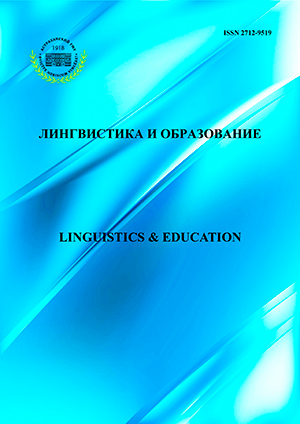
 | The peer-reviewed online edition of "Linguistics & education" was registered by the Federal service for supervision of communications, information technologies and mass mommunications on December 7, 2020 (Certificate of registration Эл № ФС77-79816). Periodicity of 4 issues per year. Distribution – Russian Federation, foreign countries. |
Published with the support of the Federal State Budget Institution "Astrakhan state medical university" of the Ministry of Health of the Russian Federation.
The online edition "Linguistics & education" is a professional publication that reflects the results of scientific research by scientists from Russia and other countries in the field of language theory, German studies, Romance studies, comparative-historical, typological and comparative linguistics, theory and methods of higher education.
The online edition is included in the "List of peer-reviewed scientific publications, in which the main scientific results of dissertations for the candidate of sciences degree, for the doctor of science degree must be published", entered into force on 03.27.2024.
The main tasks of the network edition are:
- reflecting the results of research, practical and innovative activities of teaching staff, students, graduate students and applicants of Astrakhan State Medical University, as well as teaching staff and scientific workers of universities and scientific organizations in Russia, the CIS countries and foreign countries;
- organization of discussions on current problems of science and practice of linguistics;
- expansion of the communicative space of interaction between Russian and foreign scientists;
- drawing attention to the most relevant, promising and interesting areas of linguistics;
- publication of research materials of young scientists;
informing specialists and the public about the life of the international and national scientific community; - about congresses, conferences, publications of monographs, lecture courses and textbooks.
The online edition pays attention to new language phenomena and new sources, knowledge and use by the authors of the latest domestic and foreign publications on research topics, scientific objectivity and qualitative analysis of facts with the use of methodologies and methods of scientific research corresponding to the modern level of development, discussion. Supporting the development of scientific interaction, the publication welcomes articles co-authored with Russian and foreign researchers as part of international projects.



















